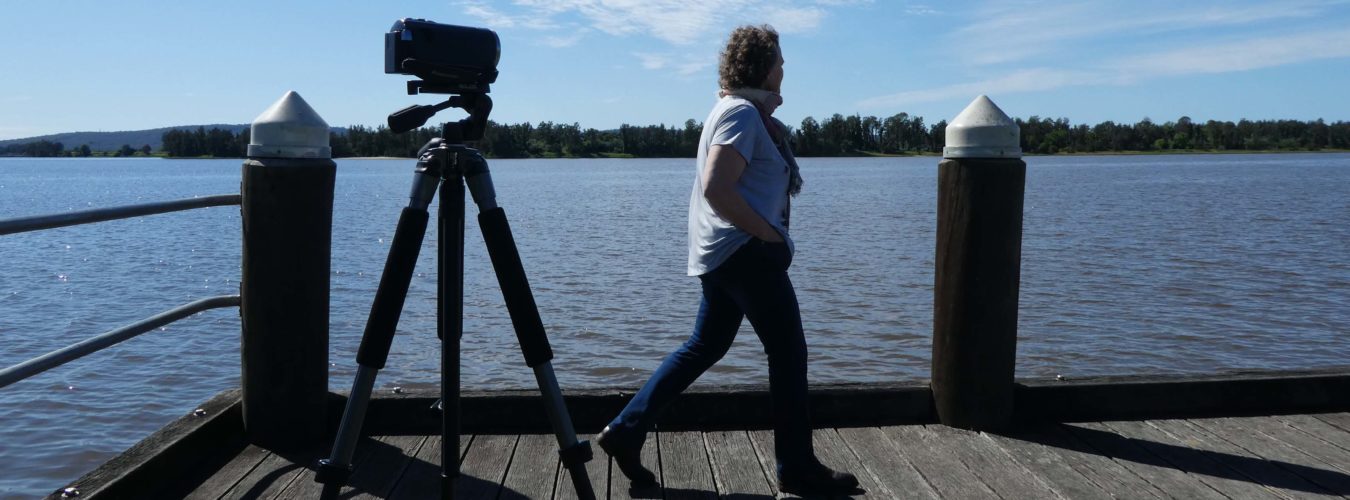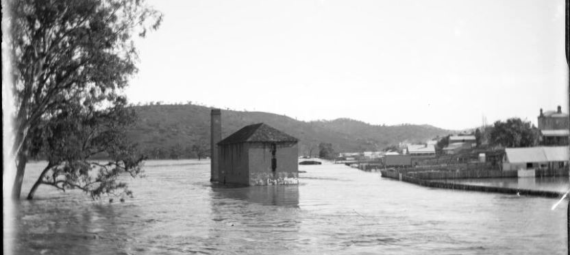February 2021: Wiradjuri Country
From Rotary Lookout in Gundagai NSW you can take in the town and the wide floodplain of the Murrumbidgee River in one sweeping glance.
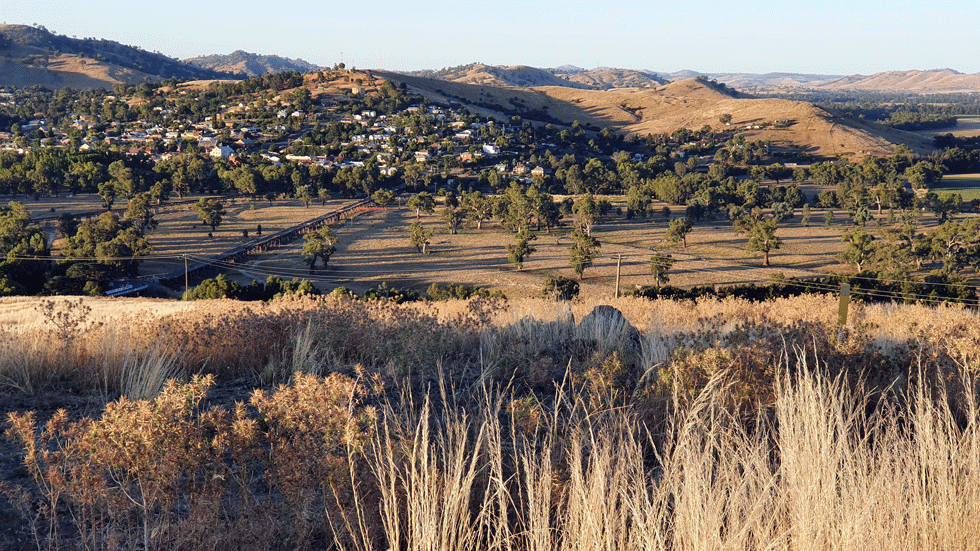
That river – the second longest in Australia and a major tributary of the Murray River – profoundly shaped the town of Gundagai. The now legendary 1852 flood literally forced the then fledgling settlement to relocate to its current site on higher ground.
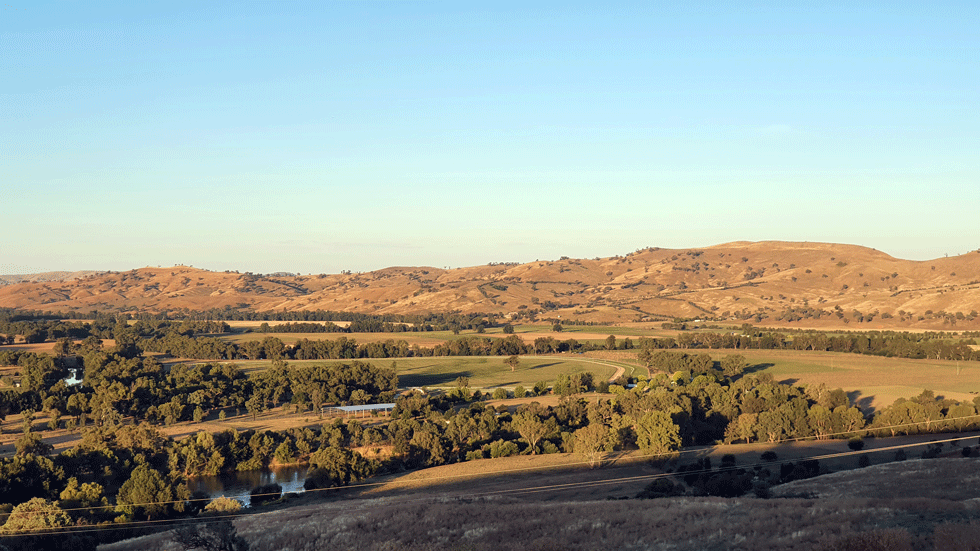
That monstrous swollen torrent roared into the valley to drown at least 89 people and destroy most of the town’s buildings. The horror of it is seared into the collective memory of the town. Reminders of the tragedy remain even 170 years later.
Lost School
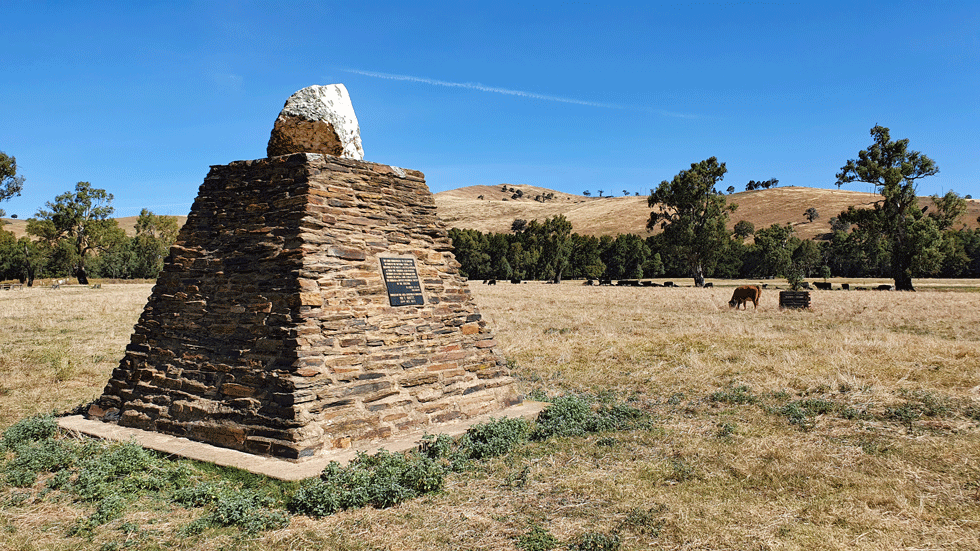
Drive or walk out onto the floodplain to see this monument remembering one of the darkest moments of the 1852 deluge. The school master, his wife and five children, and their two boarders (both aged 13) were swept to their deaths when the school building on which they were stranded finally collapsed. Nearby a sign details the location of the centre of the old town.
Heroes remembered
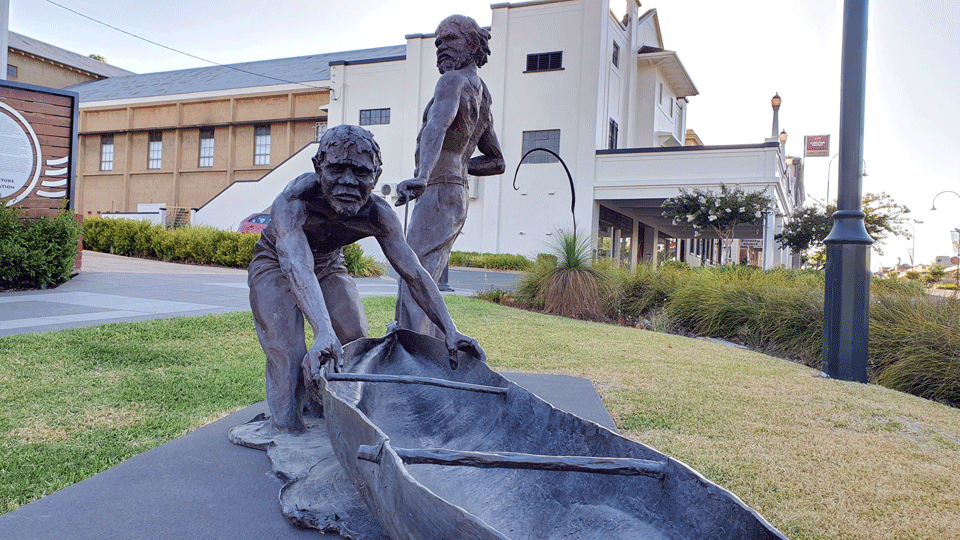
This wonderful sculpture commemorates the extraordinary heroism of two Wiradjuri men, Yarri and Jacky Jacky.
Over several days and nights in 1852, the pair rescued 69 people from the flood in their frail-looking bark canoes and a row boat. It’s a feat of such bravery (often in the dark and with only their own skill and strength) that it is hard to understand why it’s not more widely known in Australian folk lore.
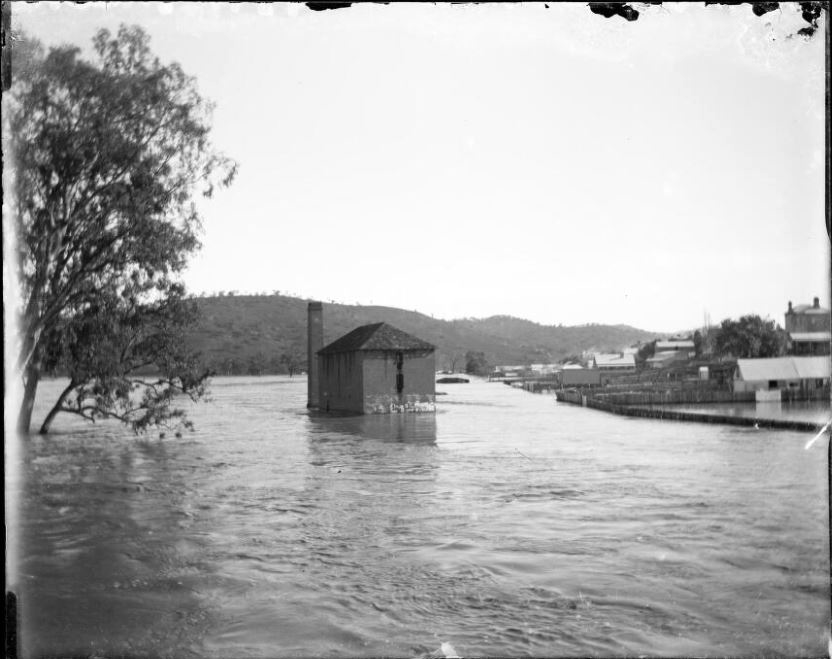
Aboriginal people have lived in the area now known as Gundagai NSW for at least 50,000 years. The Wiradjuri people used the river flats for camping, hunting and gatherings, but they well understood its dangers. Their warnings to early settlers not to build on the floodplain were ignored with catastrophic consequences in 1852.
Pub murals
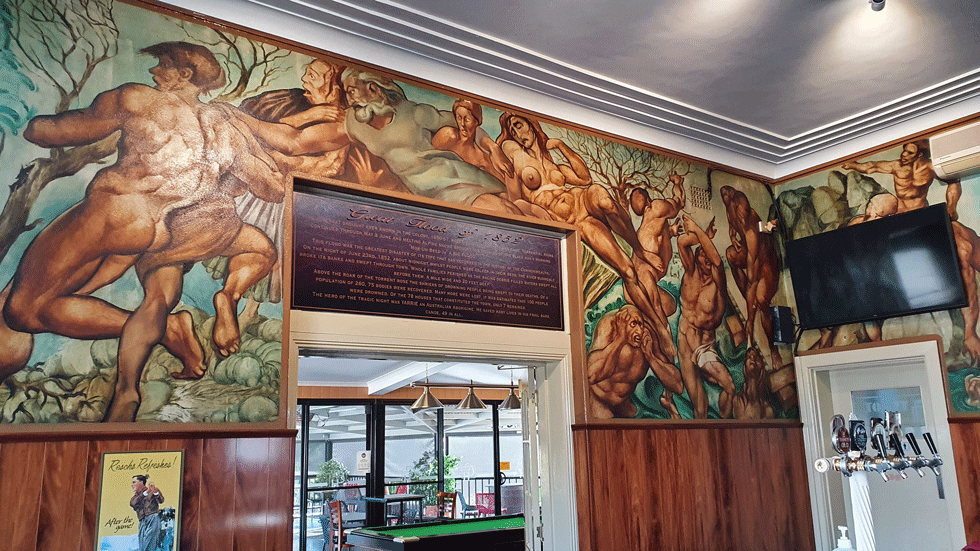
Even when you venture into the Art Deco era Criterion Hotel in the main street, the story of the 1852 flood is impossible to ignore. It’s been immortalised in fantastic murals done by artist Arnold “Don” St Claire in the 1960s. The paintings reference the biblical flood story and works by Michaelangelo, and capture starkly the terror of the event. There’s also a board listing the names and ages of everyone known to have drowned in the disaster.
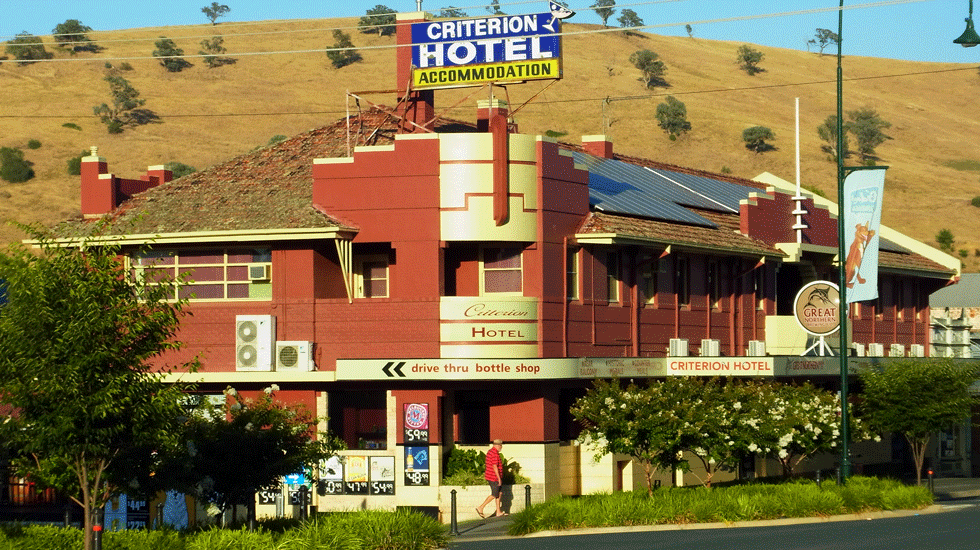
St Clair was a gifted artist who was a finalist in the 1965 Sulman Prize and in the 1966 Archibald Prize. He was also a troubled soul – struggling with depression and alcoholism throughout his life. He was ultimately a victim of the discredited Deep Sleep Therapy at Chelmsford Private Hospital in the 1970s.
Flood indicator
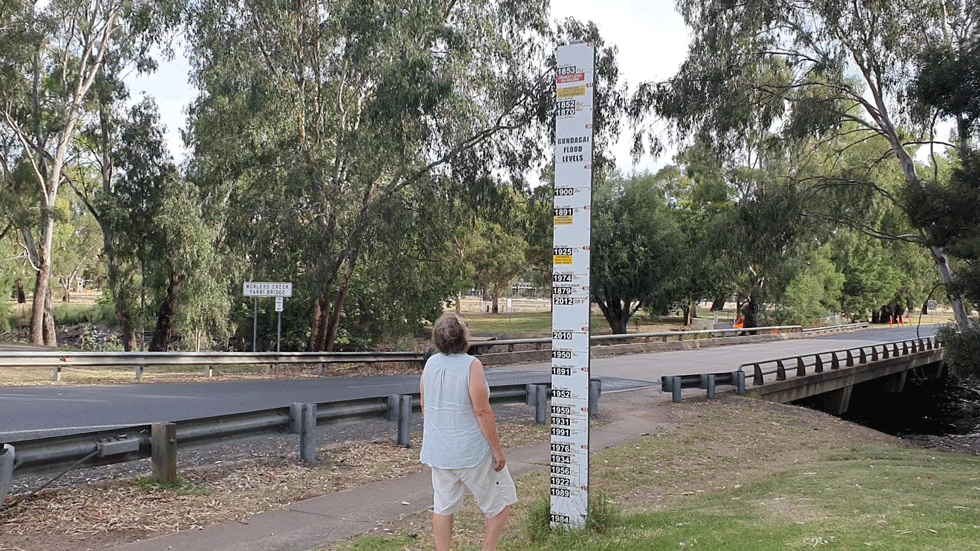
To get some idea of what a really serious flood looks like, have a look at the indicator on the corner of Sheridan Lane and Homer Street, close to the banks of Morley Creek. It shows the flood height reached 12.4m (40 feet, six inches) on June 26, 1852. Remarkably, the traumatised townsfolk faced an even bigger flood the following July which reached almost another foot higher, but they were clearly better prepared.
Wooden Bridges
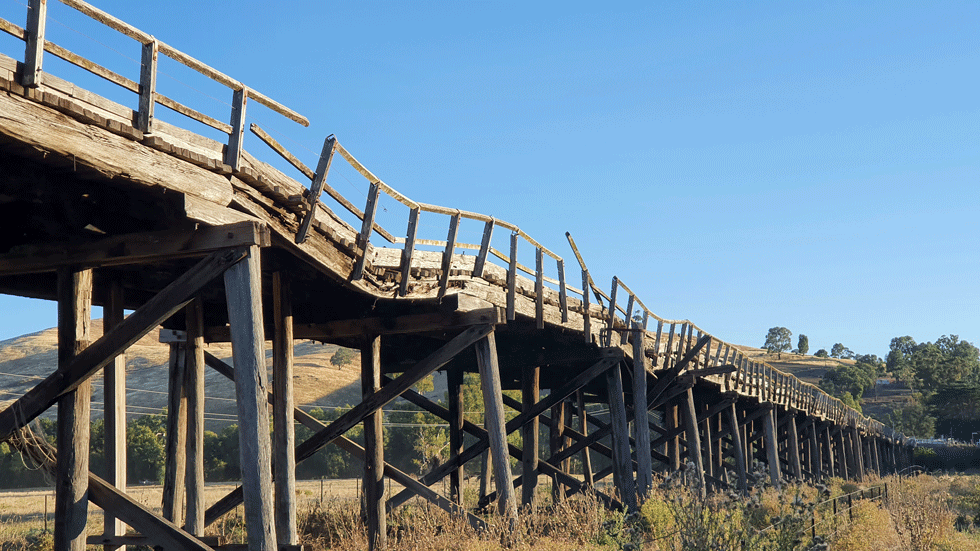
Gundagai’s two historic wooden bridges are further testament to the flood-prone nature of the spot. They stretch rather magnificently out over the floodplain linking the main town with South Gundagai and the road to Tumut.
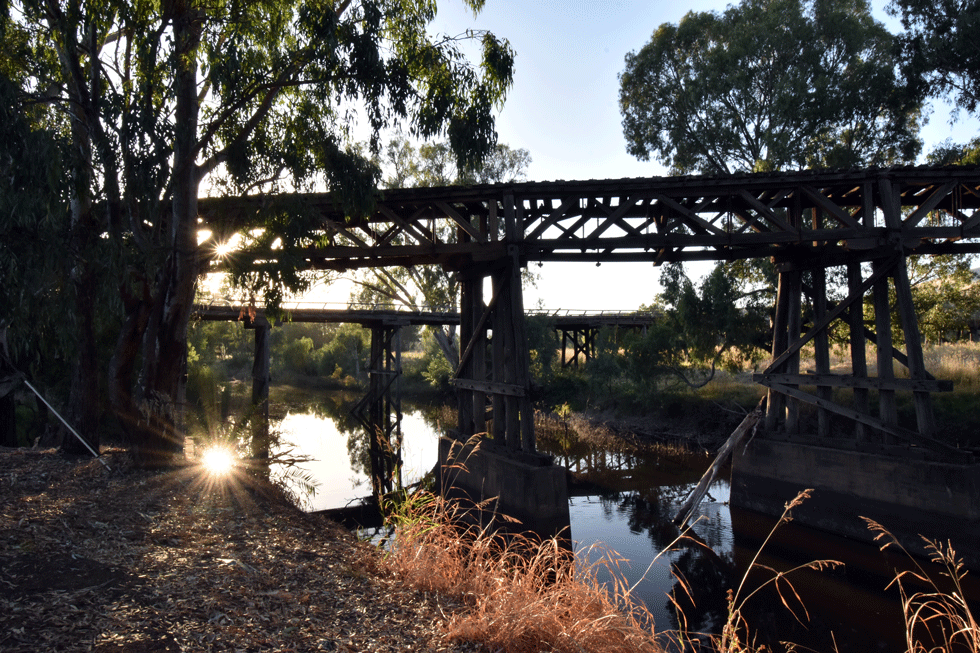
These days the bridges are in ramshackle condition and can no longer be crossed safely, even on foot. They are the Prince Alfred Bridge (completed 1867) and the Murrumbidgee River Railway Bridge (completed 1903). Both are heritage listed and rare examples of timber truss bridges.
More things to do
Take a walk
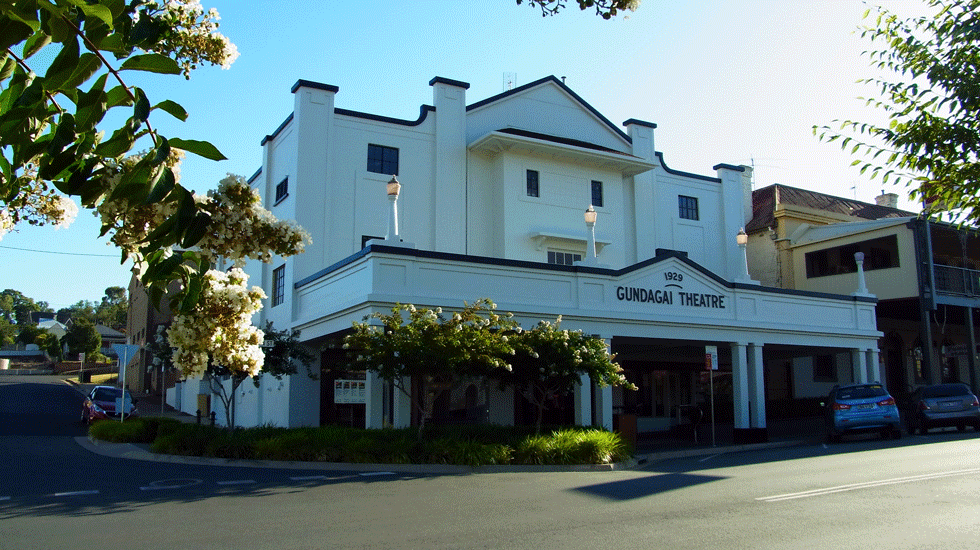
Gundagai NSW is a beautiful old town with many historic buildings and you can pick up a heritage walk map from the tourist centre. The Old Mill (1849) in Sheridan Lane was the only major building to surive the 1852 flood (and was to survive many others). The Family Hotel (1858) was once an agent for Cobb and Co Coaches.
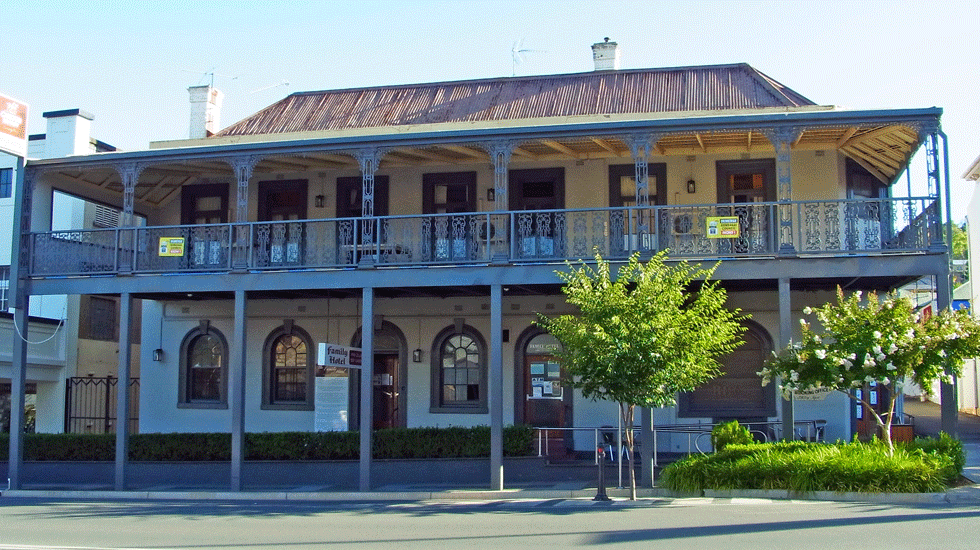
The former gaol (1859) is also interesting with its slate walls and links to bushranger Captain Moonlite who was held there at one time. The old post office (1879) is a beauty and it was from here that the last official horseback mail service operated until 1984. The Gundagai Theatre (1928) is a fine example of architechture from the Art Deco period, as is the Criterion Hotel up the street.
Gay bushranger
As bushrangers go, Andrew George Scott (also known as Captain Moonlite) was an unusual one and there remains much specualtion about whether he was in fact gay. His crimes included fraud and armed robbery and he assembled a gang with whom he terrorised his victims.
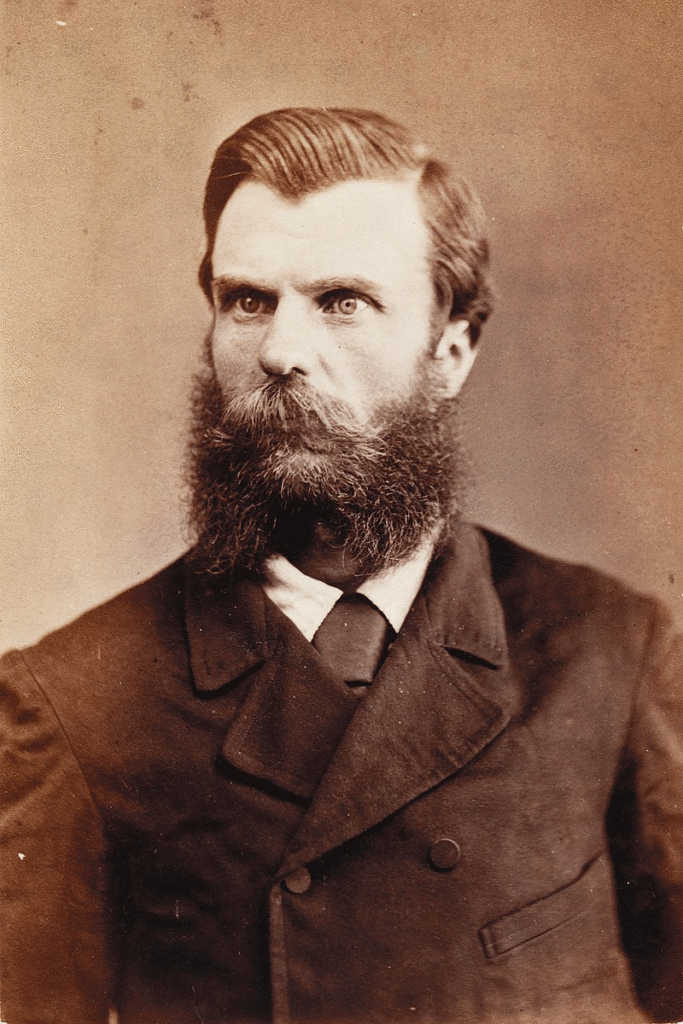
He was sentenced to ten years hard labour at one time, but only served a portion of the sentence before being released. He then met up with James Nesbitt, a young man whom he had met in prison. Nesbitt is considered by many to be Scott’s lover and there is a significant primary source evidence that supports that idea. Scott’s handwritten letters, held in the Archives Office of NSW, profess this love. Nesbitt was shot and killed in a shoot out at Wantabadgery Station near Wagga, while Scott was captured and sentenced to death.
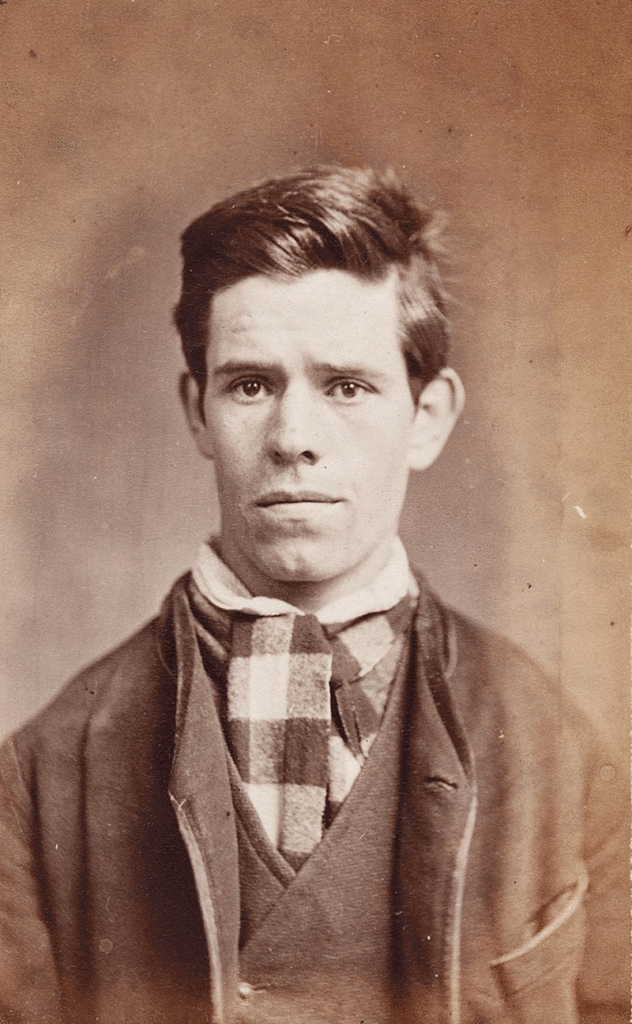
Scott went to the gallows wearing a ring woven from a lock of Nesbitt’s hair on his finger and his final request was to be buried near his constant companion, “My dying wish is to be buried beside my beloved James Nesbitt, the man with whom I was united by every tie which could bind human friendship, we were one in hopes, in heart and soul and this unity lasted until he died in my arms.”
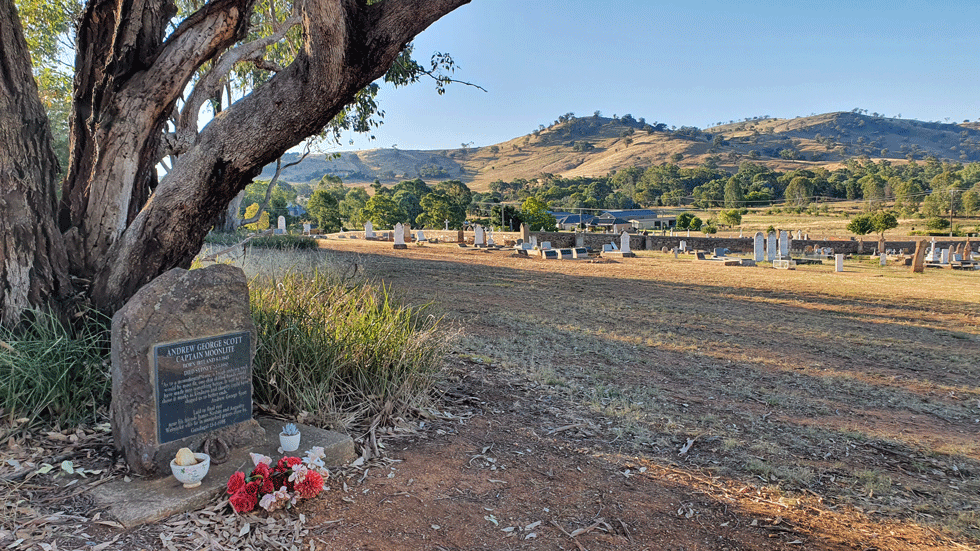
Nesbitt was buried in an unmarked grave in North Gundagai cemetery, while Scott was buried in Sydney’s Rookwood Cemetery after his execution. Following lobbying by a number of Gundagai locals, Scott’s remains were transferred to Gundagai NSW in 1995 and a headstone erected, in accordance with his dying wish to be buried next to James Nesbitt. You can visit the grave and contemplate this strange and sad story.
Marble masterpiece
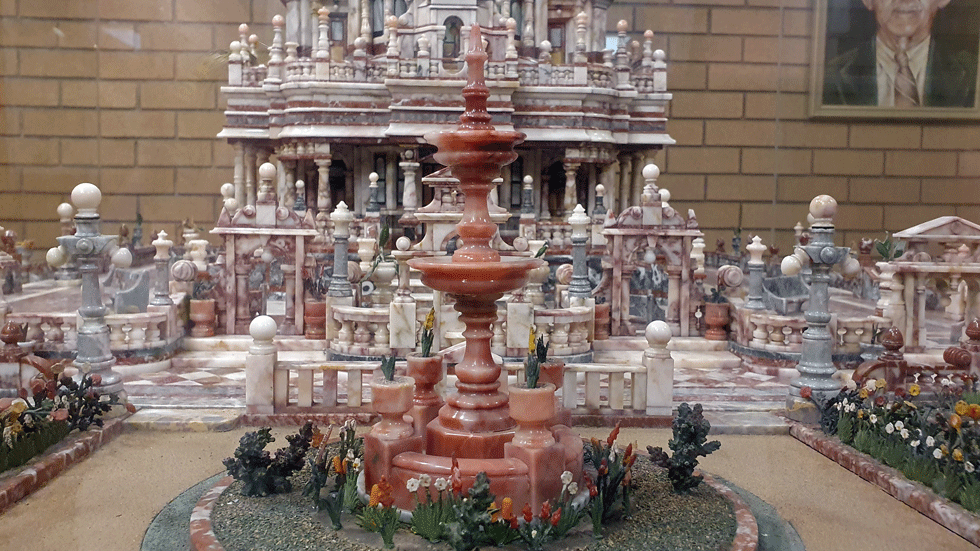
Call in to Gundagai Visitor’s Centre to see the so-called Marble Mastperpiece. This painstaking miniature cathedral was created by stone mason Frank Rusconi (who lived locally) and took 28 years to complete (1910 to 1938). The extraordinary piece consists of 20,948 individually hand cut pieces of marble all sourced in NSW.
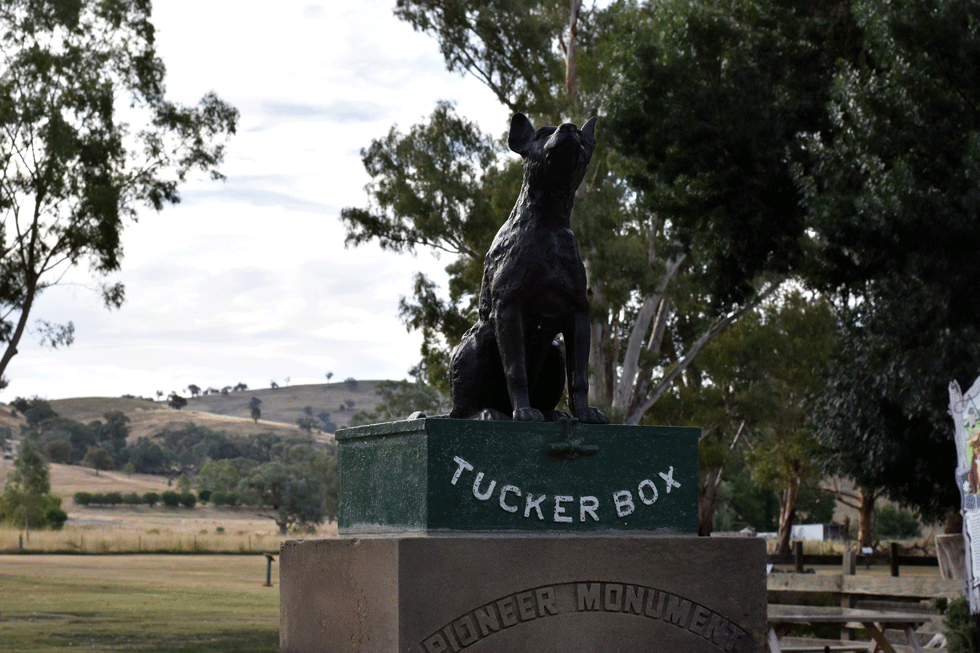
Dog on the Tucker Box
We were very disappointed with this, as far as well-known tourist attractions go. There, we’ve said it. The site of the Dog on the Tucker Box statue is at a dusty and fairly unattractive truckstop off the Hume Highway not far from town. Given its well known status, that’s not at all what we hoped for. The statue itself is nice enough, but there wasn’t a lot to recommend the site generally. Go and have a look, but don’t expect too much.
Where we ate
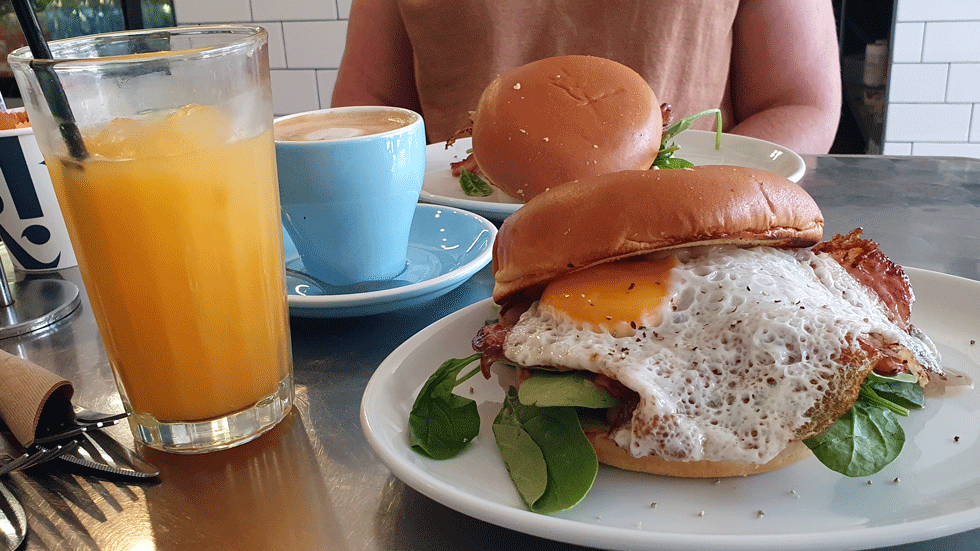
There are plenty of good places to eat in Gundagai and nearby. We enjoyed a good breakfast at The Coffee Pedaler in Sheridan Street. Bacon and Egg roll, good coffee and fresh orange juice.
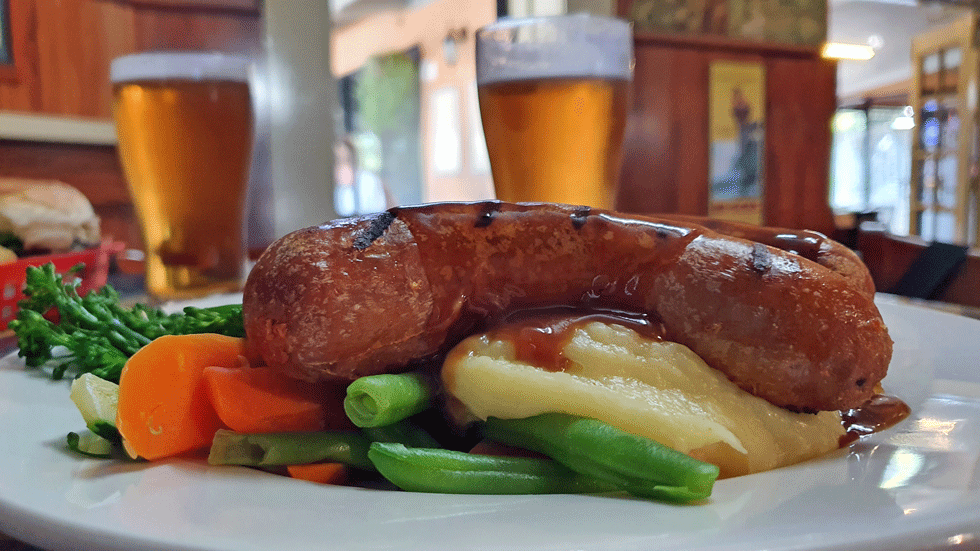
The Criterion Hotel (see more above) served up a menu of good solid pub food including classic bangers and mash. There’s a great deck out the back too. This is a good quality country pub with the kind of menu you’d expect. The service was friendly and helpful.
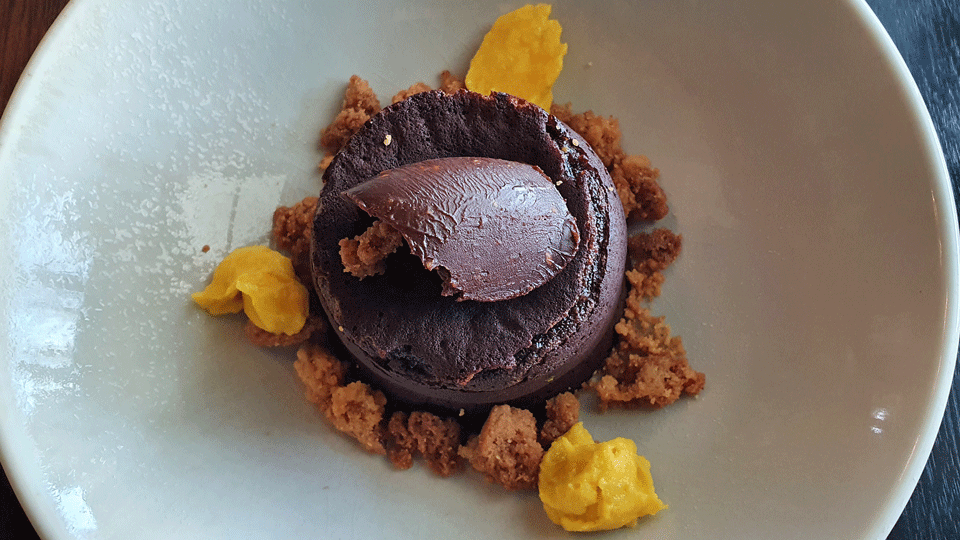
A highlight was our meal at Nimbo Fork Lodge which is between Gundagai and Tumut at the confluence of the Nimbo Creek and the Tumut River. The restaurant is called Three Blue Ducks. Really excellent meal of regionally sourced produce – including tender rack of lamb and whole trout. Washed down with a smooth shiraz from Tumut Wines and followed by a wonderful dessert. The setting was gorgeous inside and out. Even the half hour drive from Gundagai NSW was lovely.
Two Minute Postcards can thoroughly recommend finding out more about Gundagai.
